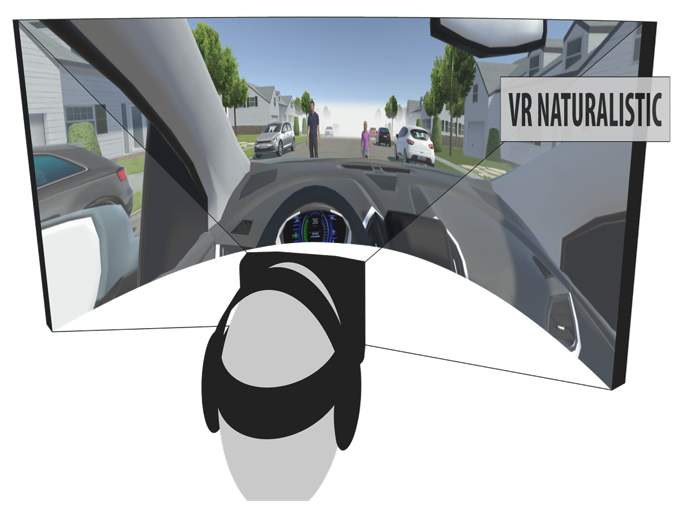Main content
Top content

Virtual Reality Setup. You can the head up display and the simulated naturalistic environment. (click on image to see an animation)
Can a self-driving vehicle be moral, act like humans do, or act like humans expect humans to?
To answer this we perform experiments in virtual reality to allow to study human behavior in simulated road traffic scenarios and use machine learning to model human bevaiour.
The participants were asked to drive a car in a typical suburban neighborhood on a foggy day when they experienced unexpected unavoidable dilemma situations with inanimate objects, animals, and humans and had to decide which was to be spared. The results were conceptualized by statistical models leading to rules, with an associated degree of explanatory power to explain the observed behavior. The research showed that moral decisions in the confined scope of unavoidable traffic collisions can be explained well, and modeled, by a single value-of-life for every human, animal, or inanimate object.

